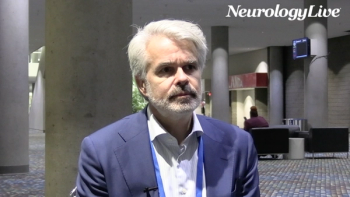
Designing the Phase 3 EMPEROR Trial and Future Considerations
In this final segment, Joseph Sullivan, MD, outlines the rationale, design, and key considerations behind the phase 3 EMPEROR trial, which aims to confirm zorevunersen’s efficacy and potential disease-modifying effects in Dravet syndrome. [WATCH TIME: 3 minutes]
Episodes in this series

In this two-part NeurologyLive® Special Report, epilepsy experts Scott Perry, MD, and Joseph Sullivan, MD, provide clinical insights into zorevunersen, an investigational antisense oligonucleotide therapy in development for Dravet syndrome. Across both discussions, they explore the rationale behind targeting the SCN1A gene, review emerging efficacy and safety data, and highlight how gene-directed approaches may complement or go beyond current anti-seizure medications.
In this latest installment, Sullivan, director of the Pediatric Epilepsy Center at UCSF, discussed the 36-month data presented at IEC 2025, including long-term seizure reduction, Vineland-3 outcomes, and safety observations from the open-label extension. He also breaks down the design of the ongoing phase 3 EMPEROR trial and reflects on how zorevunersen continues to demonstrate additive benefit, even in patients already receiving highly effective therapies.
In this final episode, Sullivan describes the extensive planning that went into structuring the EMPEROR trial, from dose selection and duration to endpoint timing. He explains how the trial balances the need for statistical power and ethical feasibility, using a sham-controlled design with defined primary and secondary endpoints. The study’s structure, he notes, is intended to capture both early seizure outcomes and longer-term functional benefits while maintaining scientific rigor and participant safety.
Transcript edited for clarity.
Joseph Sullivan, MD: A lot of thought and planning went into the design of the EMPEROR trial. I was fortunate to be involved in those discussions with several colleagues, and while there were differences in opinion along the way, we ultimately came to a consensus on key design elements. We had to make decisions about which doses to study, how far apart those doses should be given, and perhaps most importantly, how long the trial should run.
As excited as we all are about seeing the 36-month outcome data from the early-phase studies, it would be unrealistic—and arguably unethical—to run a sham-controlled trial for that long. On the other hand, we didn’t want the trial to be too short either, because that could risk missing meaningful differences between the treatment and sham arms, particularly for secondary outcomes like the Vineland-3 composite score. If the observation period were too brief, there might not be enough time for the treated patients to separate from controls in a measurable way.
That’s why the study design takes a balanced approach. The primary endpoint focuses on seizure reduction, which can be evaluated earlier in the trial, while secondary outcomes like adaptive behavior are assessed over a longer, 52-week period. That duration gives us enough time to observe the natural history in the sham arm and any developmental divergence in the active-treatment group.
I believe this structure gives the trial the best chance to succeed and to provide clear, interpretable data. It also helps address ongoing skepticism in the field—questions about whether we’re truly seeing disease modification or just another highly effective symptomatic therapy. By thoughtfully timing the assessments and maintaining a rigorous design, we hope EMPEROR will definitively answer that question.
It’s a complicated trial to execute, but all the recruiting sites recognize the tremendous unmet need in this patient population. Our teams—and our patients—understand why this kind of design is necessary. If we tried to rush it and fell short of statistical significance, it wouldn’t help the broader Dravet community. This is our opportunity to get it right and to generate data that could finally confirm the potential for a disease-modifying therapy in this space.
Newsletter
Keep your finger on the pulse of neurology—subscribe to NeurologyLive for expert interviews, new data, and breakthrough treatment updates.

































